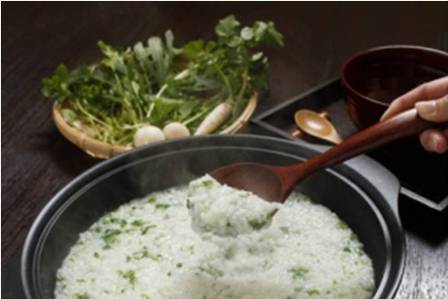
On January 7 families throughout Japan prepare kayu cooked with seven different vegetables, or haru no nanakusa (the seven herbs of spring). Kayu is a porridge made by cooking rice with twice the usual amount of water.
This practice came to Japan from China, where there was a custom of eating freshly harvested herbs early in the new year, but it's also been around in Japan for a long time, since there is a mention of it in Makura no soshi (The Pillow Book), written about a thousand years ago by a lady-in-waiting of the Japanese Empress.
The seven herbs vary from region to region and also from era to era, but today they commonly consist of the leaves of dropwort, shepherd's purse, cottonweed, chickweed, henbit, turnip, and radish.
Eating these greens in the New Year was thought to replenish the body with energy from nature and to promote good health and longevity. It's a time-honored custom that's also very practical, since the herbs are a good remedy for indigestion from having had too much mochi (rice cakes) and other New Year's delicacies over the holidays.
http://web-japan.org/kidsweb/explore/calendar/january/nanakusa.html
| 
